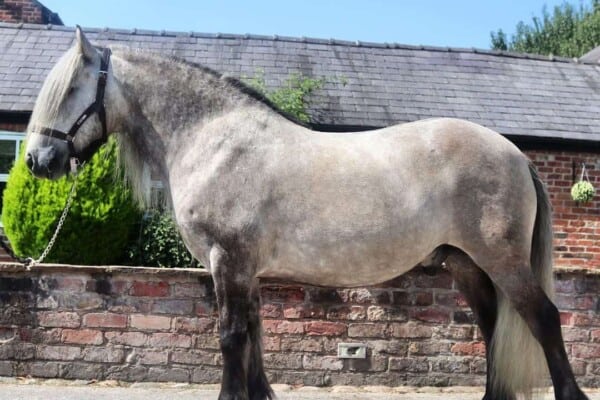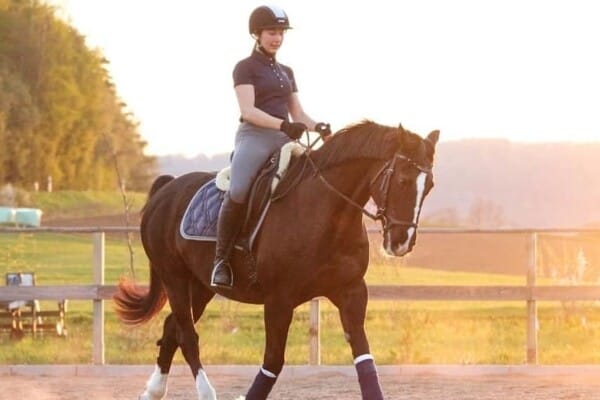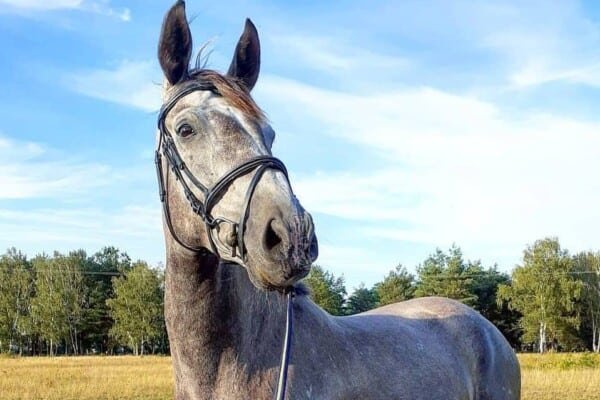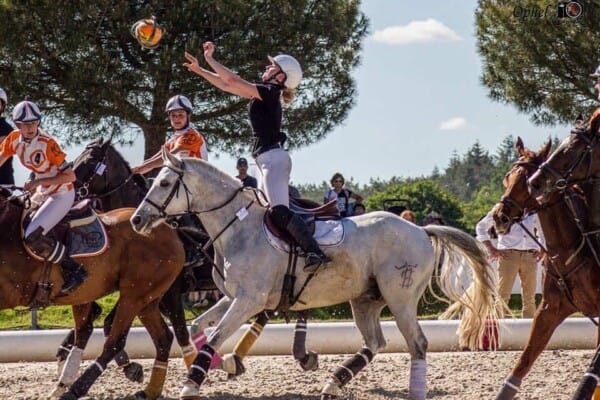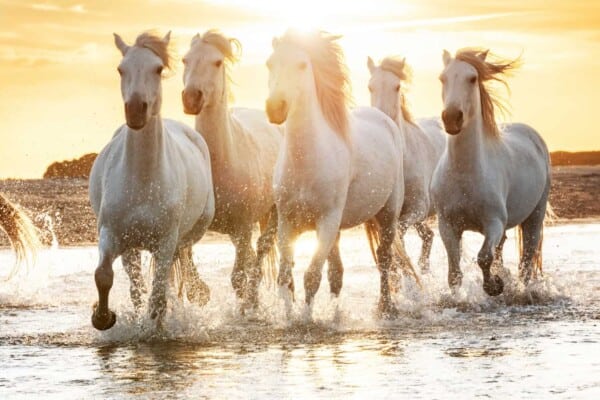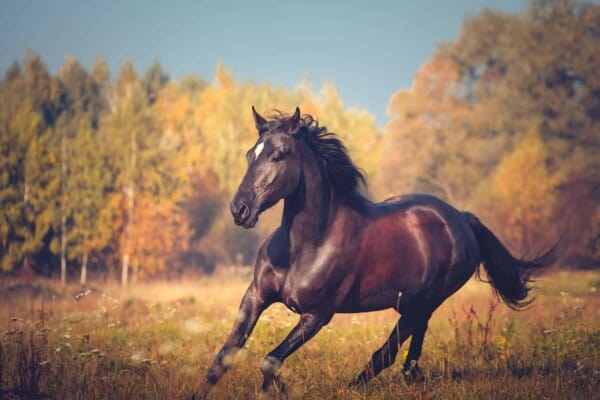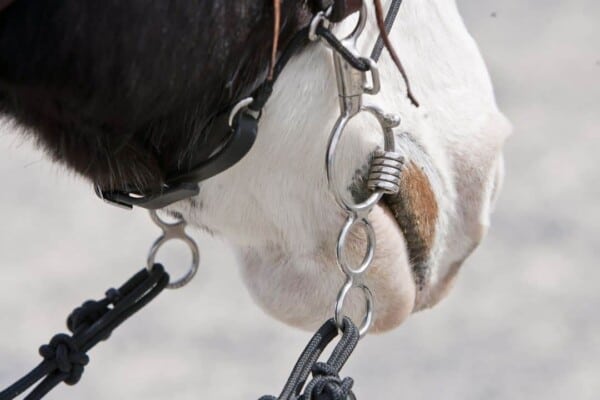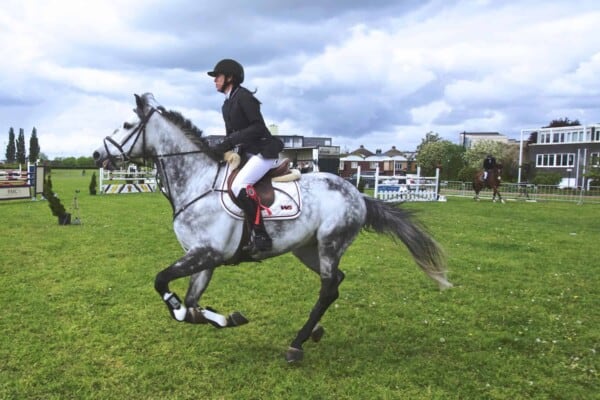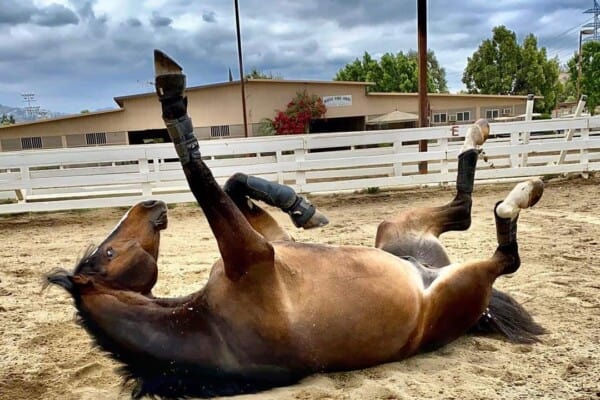“In riding a horse, we borrow freedom. (Helen Thompson).”
Galloping is seen as the ultimate attempt to capture this freedom. When the good weather arrives, so does the desire to head out into the open and experience the magical feeling of a galloping horse. But before you let your inhibitions loose, it’s important to learn to safely pilot your horse over open ground when traveling at speeds of at least 20 miles per hour.
- Choose a safe mount
A sensible, safe horse is essential for galloping safely, especially if it’s your first time or you have little experience riding outside of the arena. You’ll want a horse that requires more leg than whoa. A mount that you can kick along into, and at the gallop, but slows down as soon as you stop asking him to go.
- Ensure the ground is safe
The galloping ground must be safe. Make sure the footing is free from hazards such as rocks, holes, and uneven ground. These can cause serious injury to both your horse and you. Ideally, a gallop track with a specific equine surface is the best, but if you can’t access this, ensure you inspect your chosen surface thoroughly. Also, make sure any turns you’ll be making are wide and sweeping, not hairpins! Remember, you’re not in a jump-off.
- Don’t gallop in a group
While galloping together with your friends on their mounts can be exhilarating, it’s best to stick to doing it one at a time until you have built up experience. It’s not just the riders that get excited! Even the quietest horse can get silly in the company of other galloping horses, which can lead to a dangerous situation for all involved.
- Evaluate your riding skills
Don’t go straight from only riding in an arena to galloping through fields or on the beach. First, test your skills by walking, trotting and cantering in a large field. You should be able to balance over the center of the horse comfortably in your two-point in all of these paces before increasing speed. You should always put your stirrups up at least two holes to ride in this position. Also, ensure your horse is responsive to downward transitions. If you feel confident and have sufficient control of your horse, only then should you attempt to gallop.
- Build up your speed
Train yourself to be able to judge how fast you’re going. Start off with speeds just above a regular canter. To do this set up markers in a field at 400-meters apart, this works out as a 400mpm speed. Time yourself, it should take you one minute to ride between the markers. The exercise tests and builds your balance and strength. Once comfortable at this speed, move your markers 50-meters farther apart to 450mpm
- Learn extra stopping skills
Even if you’ve chosen a sensible horse, there is no guarantee that you won’t have a problem stopping. Remember, horses are unpredictable, and even the most placid horse could have the rare flare-up of over excitement, making it extremely hard to stop when galloping. Having a few emergency brakes in your tool kit will increase your safety. There are two manoeuvres you can do with your reins for an emergency stop.
- The first, less harsh method, is the one-rein stop. The one-rein stop essentially disengages the horse’s hind end, cutting out his motor. To do this stop, push one hand down into the neck of your horse and lift and pull the other rein back towards your hip bone while sitting up tall. This will bend the horse’s neck towards your boot. Hold the rein at your hip until the horse softens and immediately release the pull when the horse responds. It is important that you teach your horse the one rein stop at a slower pace, starting with the walk, in an arena, so he doesn’t get confused when asked in an actual emergency.
- The second, more extreme emergency stop, is the pulley rein. This method is all about giving you leverage. You are better off remaining in a correct two-point position. You need to quickly determine which way is your outside, in an arena, this will be the rail, but out in the open, outside is the safe direction, away from potential dangers if you turn inside. Push your inside hand, knuckles down, into the crest of your horse’s neck, bending your wrist inwards. Pull up towards at least the middle of your rib cage with your outside rein, being careful not to bend the horse’s neck too much. If the neck is bending, shorten your rein or move your hand towards the withers. This method is extremely strong, as soon as your horse slows give him some release, don’t wait for him to stop completely, as it can cause him to rear.
It is always best to try and stay straight and not turn in this type of emergency situation. Turning at high speed can cause your horse to fall. These are harsh methods and should only be used in an emergency.
Following simple safety rules will help ensure your galloping adventures stay safe for both you and your horse. You’ll be prepared to handle an unexpected situation without panicking and giving yourself a fright that knocks your confidence. With practice, you’ll soon have this skill perfected and will be galloping into the sunset of your dreams, just like in the movies!



